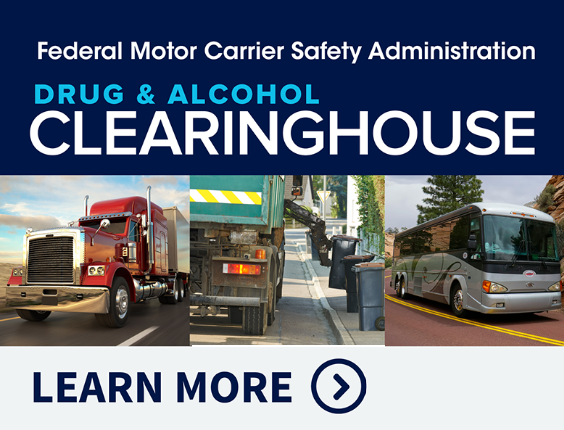https //clearinghouse.fmcsa.dot.gov Login: Drug & Alcohol Clearinghouse Login
https //clearinghouse.fmcsa.dot.gov Login: Drug & Alcohol Clearinghouse Login
The Federal Motor Carrier Administration (FMCSA) established the Commercial Driver’s License (CDL) Drug and Alcohol Clearinghouse (Clearinghouse). This new database contains information pertaining to violations of the U.S. Department of Transportation (DOT) controlled substances (drug) and alcohol testing program for holders of CDLs.
The Clearinghouse rule requires FMCSA-regulated employers, medical review officers (MROs), substance abuse professionals (SAPs), consortia/third party administrators (C/TPAs), and other service agents to report to the Clearinghouse information related to violations of the drug and alcohol regulations in 49 Code of Federal Regulations, Parts 40 and 382 by current and prospective employees.
The Clearinghouse final rule requires the following:
- Employers must query the Clearinghouse for current and prospective employees’ drug and alcohol violations before permitting those employees to operate a commercial motor vehicle (CMV) on public roads.
- Employers must annually query the Clearinghouse for each driver they currently employ.
The Clearinghouse provides FMCSA and employers the necessary tools to identify drivers who are prohibited from operating a CMV based on DOT drug and alcohol program violations and ensure that such drivers receive the required evaluation and treatment before operating a CMV on public roads. Specifically, information maintained in the Clearinghouse enables employers to identify drivers who commit a drug or alcohol program violation while working for one employer, but who fail to subsequently inform another employer (as required by current regulations). Records of drug and alcohol program violations will remain in the Clearinghouse for five years, or until the driver has completed the return-to-duty process, whichever is later.
Who is Tested?
Generally, all CDL drivers who operate commercial motor vehicles subject to the CDL requirements on public roads in the U.S. are performing safety-sensitive functions and are subject to DOT drug and alcohol testing. This includes all full-time, part-time, intermittent, backup and international drivers.
Which substances are tested?
DOT drug tests require laboratory testing (49 CFR Part 40 Subpart F) for the following five classes of drugs:
- Marijuana
- Cocaine
- Opiates – opium and codeine derivatives
- Amphetamines and methamphetamines
- Phencyclidine – PCP
Drug cutoff concentrations can be found on the Substance Abuse and Mental Health Services Administration Web site.
DOT alcohol tests identify alcohol concentration of 0.02 and greater.
NOTE REGARDING NON-DOT TESTING:
DOT does not prohibit motor carrier employers from instituting a “company authority” testing program that is in addition to, and distinct from, the required DOT testing program. Under such non-DOT programs, employers could test for other drugs. DOT also does not prohibit employers from using tests of non-urine specimens under a non-DOT program. DOT regulations at §382.601 provide that employer materials supplied to drivers may include information on additional employer policies with respect to the use of alcohol or controlled substances, including any consequences for a driver found to have a specified alcohol or controlled substances level, that are based on the employer’s authority independent of this part. Any such additional policies or consequences must be clearly and obviously described as being based on the employer’s independent authority.
